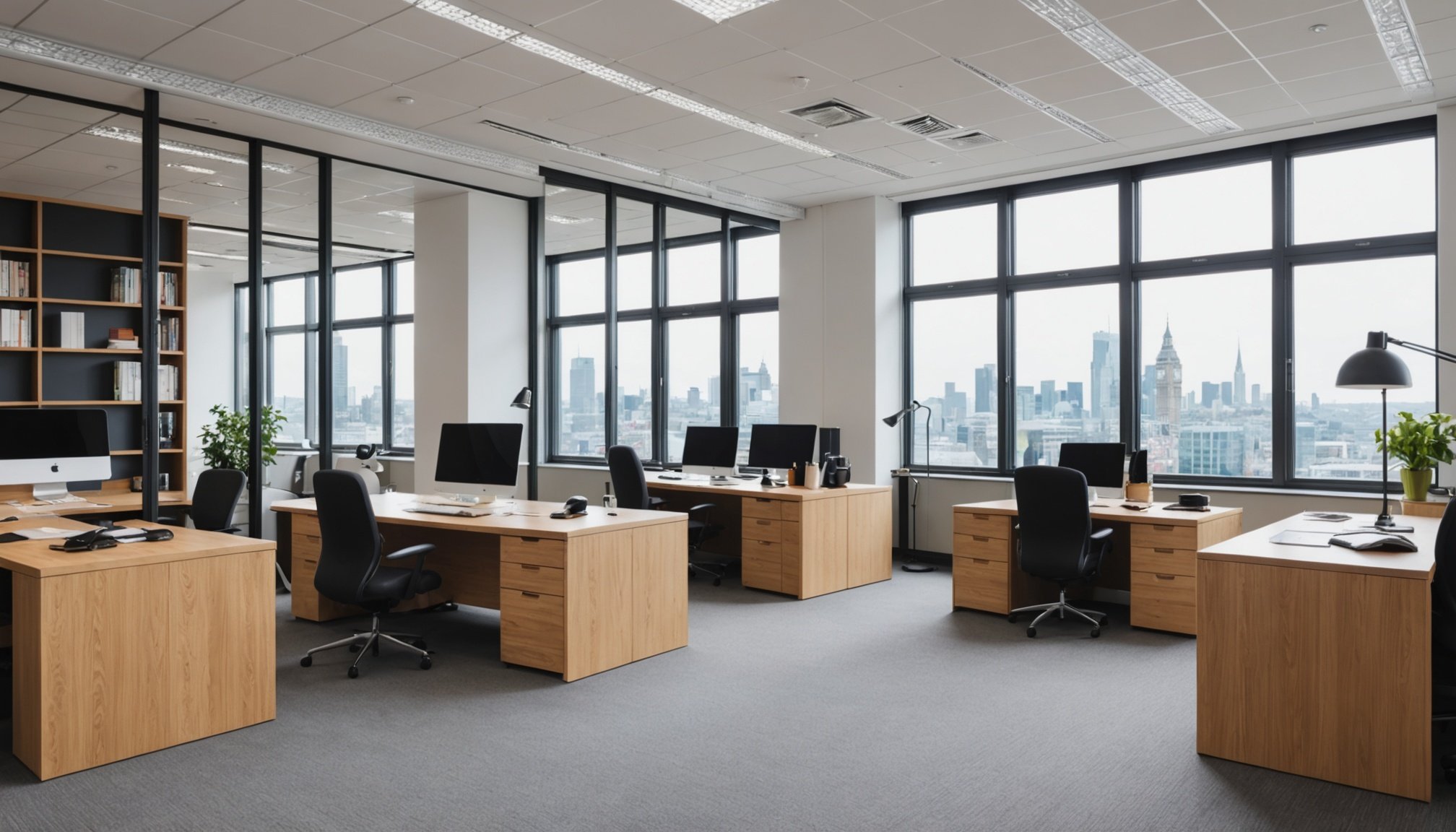Understanding Zoning and Legal Regulations
Navigating zoning laws is essential when considering a UK residential conversion from office spaces. These laws dictate where and how buildings can be constructed or modified. For instance, converting an office to a residential space may require a change in land use designation. This process often involves applying for a planning permission, which can be contingent on local councils’ approval.
Building regulations play a critical role in ensuring safety and quality in construction projects. These regulations cover various elements such as fire safety, ventilation, insulation, and accessibility. Ensuring compliance with these standards is essential not only for the success of the conversion but also for the safety and comfort of future residents.
Also to see : Mastering Tenant Evictions in a Post-COVID UK: A Landlord’s Guide to the Evolving Legal Landscape
Legal obstacles like obtaining the necessary permits can be challenging. Developers must conduct thorough research or consult experts to navigate these hurdles efficiently. Overcoming these challenges often requires presenting a comprehensive plan that addresses potential issues, such as environmental impact and community benefits. Leveraging expert legal advice and maintaining transparent communication with local authorities can significantly streamline the conversion process, securing the necessary approvals for transforming office spaces into residential units.
Evaluating Infrastructure Requirements
When considering a residential project, infrastructure needs are paramount. It’s essential first to assess whether the existing infrastructure can support planned renovations. This includes a thorough evaluation of the utilities, such as plumbing, electrical systems, and HVAC. These systems must not only meet the current demands but also accommodate any future expansions.
In parallel : Adapting to Millennial Renters: Essential Strategies for UK Landlords in a Shifting Rental Market
Building codes are another crucial factor. They are designed to ensure safety and compliance with local standards. Understanding and navigating these codes can impact the extent and nature of renovations. Non-compliance can lead to costly setbacks and redesigns, so it’s advisable to consult with experts familiar with these regulations.
In evaluating suitability, it’s important to consider:
- Existing utilities: Determine if the current setup can handle increased load.
- Building codes: Ensure all changes meet legal requirements to avoid compliance issues.
Taking these steps can ensure that the infrastructure is both adequate and adaptable to future needs, allowing for a smooth transition from planning to execution. Being informed about these aspects can save time, money, and headaches in the long run, paving the way for a successful renovation project.
Cost Implications of Conversion
Transforming office spaces comes with various financial implications that require careful planning. Cost analysis is crucial in estimating expenses for materials, labour, and design changes involved in the process. Projects can encounter unexpected costs, making budgeting an essential step to mitigate financial challenges.
Financial challenges may include overruns in labour fees or design adjustments. Planning for contingencies helps manage these surprises. It’s wise to evaluate any potential financial challenges early on. This includes considering future maintenance costs and fluctuating market prices for materials.
There are several funding options available for projects of this nature. Businesses might explore loans, grants, or investment opportunities tailored for office conversions. Financial incentives, such as tax credits or rebates, can lessen the overall burden, encouraging businesses to undertake these transformations. Exploring local government programs can unveil additional financial support avenues.
In conclusion, a thorough understanding of costs, potential hurdles, and available financial aids can steer a successful conversion. By considering these factors, businesses can make informed decisions that align with their budgeting capabilities and future financial goals.
Design Considerations for Residential Units
Creating a comfortable home extends beyond basic aesthetics—it involves strategic design aesthetics and space optimization. Key design principles focus on maximising space efficiency, enhancing functionality, and ensuring that every square inch serves a purpose. Start with smart layouts that integrate multi-functional furniture and open spaces to improve movement and accessibility.
Interior ideas are evolving towards minimalist designs that favour neutral palettes and clean lines. This trend creates the illusion of larger spaces while still maintaining a modern touch. Additionally, incorporating natural light through well-placed windows or glass doors can greatly enhance the ambiance and perceived space without sacrificing privacy.
When exploring interior ideas for modern residences, current trends lean toward combining organic elements like wood and plants with sleek, modern materials. The integration of smart home technology is also gaining popularity, offering a seamless blend of convenience and innovation.
To truly optimise space, consider innovative storage solutions that are both practical and stylish. Think under-stair drawers or furniture with built-in storage. These elements help maintain a clutter-free environment, making the living space feel more expansive and inviting. By focusing on these aspects, designing a residential unit becomes both an art and a science, balancing beauty with functionality.
Navigating Challenges in the Conversion Process
Transforming office spaces into residential areas presents unique conversion challenges. One common issue is ensuring structural integrity while altering original designs to accommodate living spaces. This requires careful planning to maintain safety standards and functionality. Additionally, adapting utilities such as plumbing and electricity to meet residential requirements poses significant hurdles.
Effective project management is crucial in addressing these challenges. Successful conversion projects often rely on comprehensive risk assessments to identify potential problems early. This involves evaluating financial feasibility, timelines, and legal constraints. By preparing for uncertainties, project managers can develop adaptable strategies that minimise disruptions and ensure smooth transitions.
Another important aspect is assessing the long-term impacts of conversions on property value and the community. While these transformations can rejuvenate underutilised areas, they may also affect local infrastructure and demand for services. It’s essential to consider community needs and incorporate feedback to enhance living standards and foster acceptance.
Ultimately, approaching office-to-residential conversion with a mindful and strategic outlook can lead to successful outcomes. By prioritising effective project management and understanding community dynamics, stakeholders can navigate these complex processes with greater confidence.
Insights from Case Studies
Examining case studies of office-to-residential conversions reveals a wealth of best practices. By analysing success stories, we uncover essential factors that ensure these projects thrive.
Real-world examples such as the transformation of central city office blocks highlight innovation in using space effectively. These conversions showcase architectural creativity by integrating residential living with historical office structures, ensuring they meet modern housing demands.
Key takeaways from successful projects include strategic location selection, emphasis on community needs, and adaptive reuse principles, which maximise existing structures’ potential. For example, projects in downtown areas often successfully balance amenities with proximity to urban conveniences, making them attractive to prospective residents.
Experts suggest that stakeholder collaboration, informed by thorough market research, contributes significantly to a project’s success. This involves engaging urban planners, architects, and community representatives to align design and functional goals. Real-world applications underscore the importance of sustainable practices—such as energy efficiency and the incorporation of green spaces—to enhance residents’ quality of life while respecting historical aspects of the building.
These insights demonstrate that successful conversions require a harmonised approach that considers economic, social, and environmental contexts, ensuring both project viability and community acceptance.
Aligning with Modern Living Requirements
In today’s fast-paced world, modern living demands versatility and adaptability. People gravitate towards spaces that resonate with their lifestyle considerations and offer convenience. Potential residents typically seek homes that not only provide comfort but also enhance their day-to-day experiences.
Understanding Modern Living Preferences
Understanding what appeals to potential homeowners is crucial. Individuals often desire homes that blend seamlessly with their lifestyle, favouring open-plan layouts and multi-functional rooms. These features allow for flexibility, accommodating everything from home offices to leisure spaces. Therefore, knowing market demands is essential to create appealing residential units.
Analyzing Market Demand
The market demand is hugely driven by evolving lifestyles. People prioritize easy access to amenities, efficient use of space, and sustainability. This means that homes must be equipped with smart systems and sustainable materials. Developers must stay informed about current trends to remain competitive and responsive to residents’ expectations.
Tips for Designing for Modern Lifestyles
Designing spaces for modern living requires attention to detail. Consider the following:
- Multi-purpose rooms: Adaptable spaces that serve multiple functions enhance usability.
- Smart technology integration: Including systems for controlling temperature, lighting, and security adds value.
- Eco-friendly features: Energy-efficient appliances and environmentally friendly materials are increasingly important to buyers.
By aligning with these preferences, you can better meet the expectations of today’s discerning residents.











